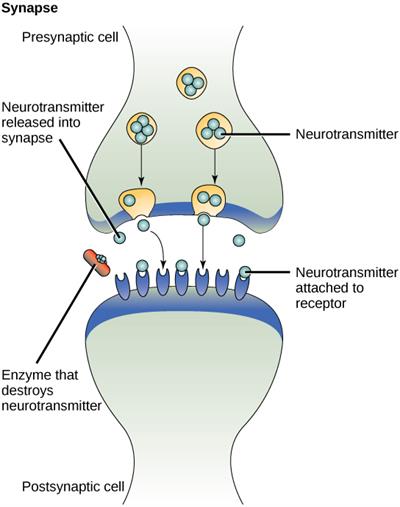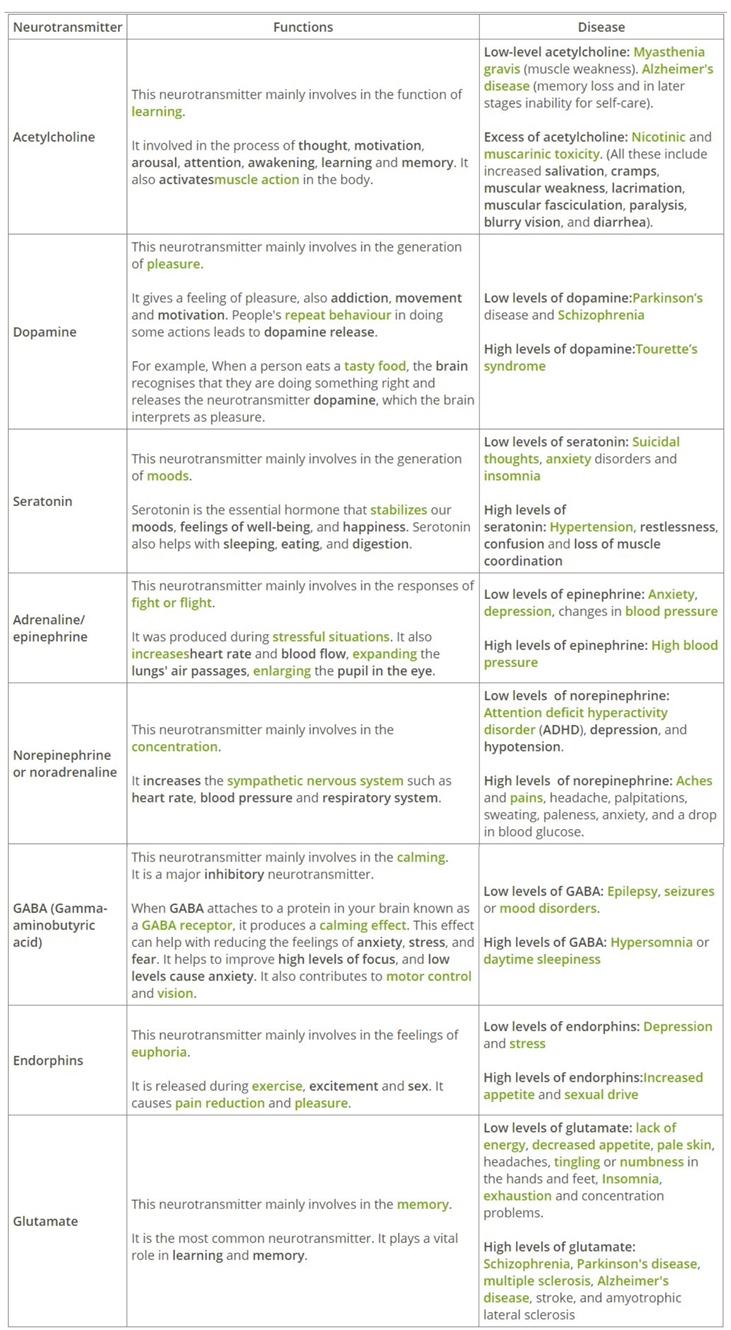
PUMPA - SMART LEARNING
எங்கள் ஆசிரியர்களுடன் 1-ஆன்-1 ஆலோசனை நேரத்தைப் பெறுங்கள். டாப்பர் ஆவதற்கு நாங்கள் பயிற்சி அளிப்போம்
Book Free DemoPreviously we studied that receptor organs are responsible for sight, hearing, smell, taste, touch, pain etc. We also studied that the signal from the receptor to the brain is transmitted through an electrical impulse.
Here the question arises, if all the signals from receptor organs are transmitted as an electrical impulse, how does our brain differentiate these inputs.
For example, if we experience pain, an electrical impulse will be transmitted to the brain. Even if we taste food, an electrical impulse is transmitted to the brain.
How are these two different sensory information differentiated in our brain if they are just a simple electrical impulse? The answer lies in the synapses of the neuron.
|
|
|
Important!
There are more than \(60\) different types of neurotransmitters present in our bodies.
The video explaining what Are neurotransmitters and what do they do in the body?
A neurotransmitter is a chemical messenger that sends, enhances and balances signals between neurons and target cells all over the body. These target cells could be found in glands, muscles, or neurons.
Neurotransmitters are key parts of neural communication, affecting anything from involuntary movements to learning and moods. This system is complicated and interconnected.
Neurotransmitters have specialised functions, although they can be altered by diseases, medicines, or the actions of other chemical messengers.
Neurotransmitters are the chemicals which allow the transmission of nerve impulses from the axon terminal of one neuron to the dendron of another neuron or to an effector organ. The important neurotransmitter released by neurons is called Acetylcholine.

Synapse
Hundreds of millions of neurotransmitter molecules work around our body to keep our brain running smoothly. It regulates everything from our breathing to our heartbeat,learning and concentration levels. They can also generate fear, different moods, pleasure and joy, among other psychological functions.
Neurons must be able to communicate with one another neuron to transmit signals throughout the body. Neurons, on the other hand, were not just connected. Each neuron has a little gap at the end called a synapse, and the signal must pass through this small space to interact with the next cell. This process happens as a result of a mechanism known as neurotransmission.
The video explaining how neurons communicate with each other.
Already we have discussed the pathway of nerve impulses in the previous object. In that, we learnt how the chemical substance is released from the axon's terminals of the neuron.
After release, depending on the type of neurotransmitter, it passes the synaptic gap and binds to the receptor site on the receiving neuron, either excitatory or inhibitory.
Like a lock and key system, neurotransmitters and receptors function together. In this case, the neurotransmitter acts as a key that will only attach to a specific receptor. similar to how the correct key is required to unlock a specific receptor (the lock). If the neurotransmitter is effective in binding to the receptor, it causes changes in the receiving cell.
Classification of neurotransmitters:
There are three different types of neurotransmitters, namely,
- Excitatory neurotransmitters.
- Inhibitory Neurotransmitters
- Modulatory Neurotransmitters
1. Excitatory neurotransmitters:
These neurotransmitters have excitatory effects on the neuron, which enables the receiving neuron more likely to trigger an action potential.
Important!
Epinephrine and norepinephrine are two of the most important excitatory neurotransmitters.
2. Inhibitory Neurotransmitters:
These neurotransmitters have an inhibitory impact on the receiving neuron, making it less likely for the neuron to trigger an action potential. Serotonin and gamma-aminobutyric acid are two main inhibitory neurotransmitters (\(GABA\)).
3. Modulatory Neurotransmitters:
These neurotransmitters, also known as neuromodulators, can affect a large number of neurons at once. These neuromodulators also influence other chemical messengers.

Important!
Henry Dale, who discovered the method of chemical transmission across synapses, also discovered the neurotransmitter acetylcholine. Also, acetylcholine is the first discovered neurotransmitter.
Reference:
https://upload.wikimedia.org/wikipedia/commons/1/16/Figure_09_01_02.jpg